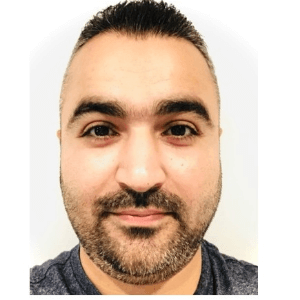Title : Unmasking a genetic mystery: Managing refractory cystoid macular edema in an adolescent
Abstract:
Introduction: This case study presents an adolescent patient with a complex ocular condition characterized by cystoid macular oedema (CMO) in both eyes (OU). The patient experienced significant diagnostic and management challenges, ultimately leading to the identification of a rare genetic cause.
Case Presentation: On the initial visit to the Eye Emergency Clinic (EEC), the patient had a best-corrected visual acuity of 6/36 in the right eye (RE) and 6/18 in the left eye (LE). Intraocular pressure (IOP) was 17 mmHg for RE and 21 mmHg for LE, with normal visual fields, pupillary reactions, and anterior segments. Dilated fundus examination revealed CMO in both eyes, without signs of peripheral retinal dystrophy. A trial of dorzolamide 2% three times a day for three months was initiated to reduce the swelling. However, after three months, OCT and retinal exams showed no improvement.
Considering retinal vasculopathy conditions such as Mac Tel type 2, fluorescein angiography (FFA) was performed twice. The initial FFA, lasting five minutes, showed no leakage in the macular area. A subsequent 30-minute Optos FFA revealed mild leakage in the peripheral vessels and areas of avascularity suggestive of Mac Tel type 2. Slit lamp examination showed occasional cells in the anterior vitreous with a bio score of zero, but no snowbanking. Based on these findings, a trial course of mycophenolate mofetil and steroids was recommended.
Electroretinography (ERG), specifically pattern ERG (PERG), was requested to rule out enhanced S-cone syndrome and Goldmann-Favre syndrome. The ERG report indicated well-formed bilateral responses in scotopic and photopic conditions and normal binocular PERG. Cone-driven 30Hz flicker responses were normal, indicating no significant optic, macular, or peripheral retinal dysfunction.
Upon medical retina team assessment, signs of mild peripheral vasculitis and mild vitreous inflammation were noted, suggestive of chronic intermediate uveitis. A steroid trial course (prednisolone 50 mg once daily for two weeks, followed by tapering doses) was prescribed. After three weeks, significant improvement was observed, but the CMO recurred a few weeks later. Consequently, azathioprine, a steroid-sparing agent, was prescribed.
The genetic screening revealed a compound heterozygous state for CRB1, leading to a diagnosis of CRB1-associated cystic macular oedema. This case is phenotypically unique, as the CMO was refractory to carbonic anhydrase therapy but responded well to steroid therapy.
Conclusion: This case underscores the importance of a comprehensive and multidisciplinary approach in managing challenging eye presentations. The initial difficulty in diagnosing the underlying cause of CMO and the eventual identification of a rare genetic mutation highlight the diagnostic challenges. The case also illustrated the critical need for personalized treatment strategies, including the use of steroid-sparing agents in managing refractory CMO.
Audience Take Away Notes:
- The case highlights the importance of early detection and management of CMO, particularly when standard treatments are ineffective.
- Understanding the complexities involved in diagnosing CMO, especially when initial clinical presentation is complicated by multiple potential underlying conditions.
- Gaining insights into the treatment options for managing CMO, including the use of steroid therapy and steroid-sparing agents, along with their limitations and potential complications.



